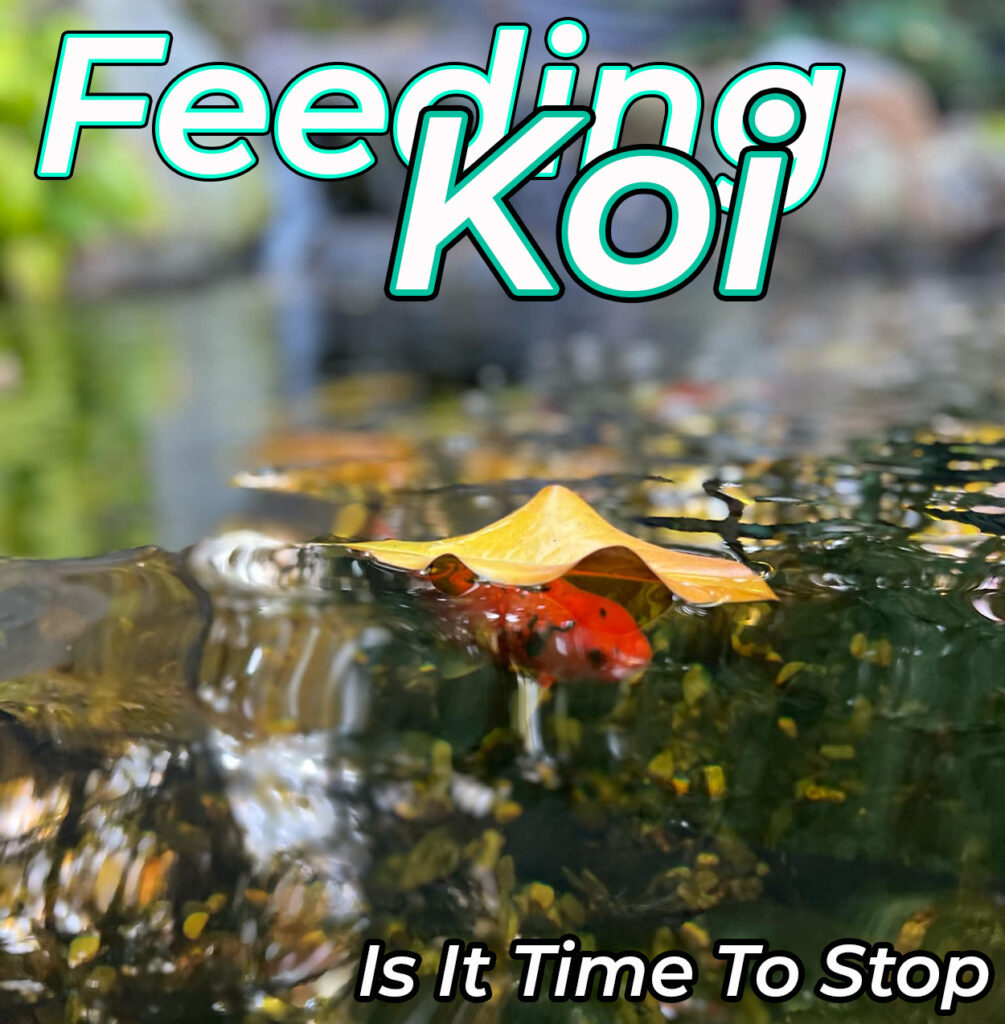
When Should I Stop Feeding Koi in New Jersey?
As the seasons change in New Jersey, koi pond owners often wonder when to reduce or stop feeding their fish. Koi have specific nutritional needs that are closely linked to water temperature, which affects their metabolism and digestion. To keep your koi healthy through the fall and winter, understanding when and how to adjust their feeding is essential.
Why Water Temperature Matters for Koi Feeding
Koi are cold-blooded, meaning their body temperature changes with the water around them. As New Jersey’s temperatures cool, pond water also chills, slowing down koi metabolism. This makes it more challenging for koi to digest food, which is why careful monitoring of water temperature is crucial.
Using a pond thermometer will help you track temperature shifts and determine when it’s time to slow down or stop feeding your koi.
When to Start Reducing Food for Koi in Fall
When water temperatures in your pond begin to fall to around 70°F–65°F, usually in early fall, it’s time to gradually reduce feeding. Koi are still active at this temperature, but they don’t need as much food. Switching to a wheat-germ-based food, which is easier to digest, can also support their dietary needs during this transition period.
How to Feed During the Cooling Period
- Try feeding once daily
- Provide only what they can eat within a few minutes
- Remove any uneaten food promptly
Leftover food can harm water quality, especially as temperatures drop.When Should I Stop Feeding Koi Completely?
When water temperatures consistently reach 50°F, it’s best to stop feeding your koi altogether. At this point, their digestion slows so much that food can remain in their systems, risking health problems as they enter winter dormancy. Feeding at lower temperatures can lead to a buildup of undigested food, which may cause infections.
In New Jersey, pond water typically drops to 50°F by late October or early November, but this can vary based on pond depth and location. Monitoring your pond’s temperature regularly will ensure you stop feeding at the right time.
Winter Care: What Happens After Feeding Stops
During the winter, koi enter a state of torpor, becoming mostly inactive near the pond bottom, where water remains slightly warmer. Koi rely on stored body reserves and do not require food during this dormant period.
Winter Pond Maintenance Essentials
- Keep an area of the pond surface ice-free
- Use an aerator or pond de-icer
- Ensure proper oxygen exchange
This setup supports koi health through the cold months.
When Can I Start Feeding Koi Again?
Once water temperatures consistently rise above 50°F in early spring, you can start feeding your koi again, beginning with small amounts of wheat-germ-based food. As temperatures increase to 65°F and above, you can gradually resume normal feeding. Starting slowly helps avoid stressing their digestive systems as they transition out of dormancy.
Key Tips for New Jersey Koi Owners
- Monitor Water Temperature: A pond thermometer is essential for tracking the right time to reduce and stop feeding.
- Switch to Wheat Germ: Wheat-germ-based food is easier for koi to digest as temperatures cool.
- Remove Uneaten Food: Clear away any leftover food to maintain water quality.
- Maintain Oxygen Levels: Keep part of the pond ice-free through winter to allow oxygen exchange.
Final Thoughts
Adjusting feeding practices as temperatures cool is essential to koi care in New Jersey. By stopping feeding at the right time and maintaining proper winter conditions, you can help your koi transition smoothly and stay healthy until spring.
If you’d like more guidance on koi pond care in New Jersey, reach out to us! We’re here to help you create a thriving pond ecosystem, season after season.
Need help preparing your pond for winter? Contact us at 973-627-0515 for expert guidance across New Jersey!
For more content with tips, tricks and amazing water feature goodness, check us out on YouTube!